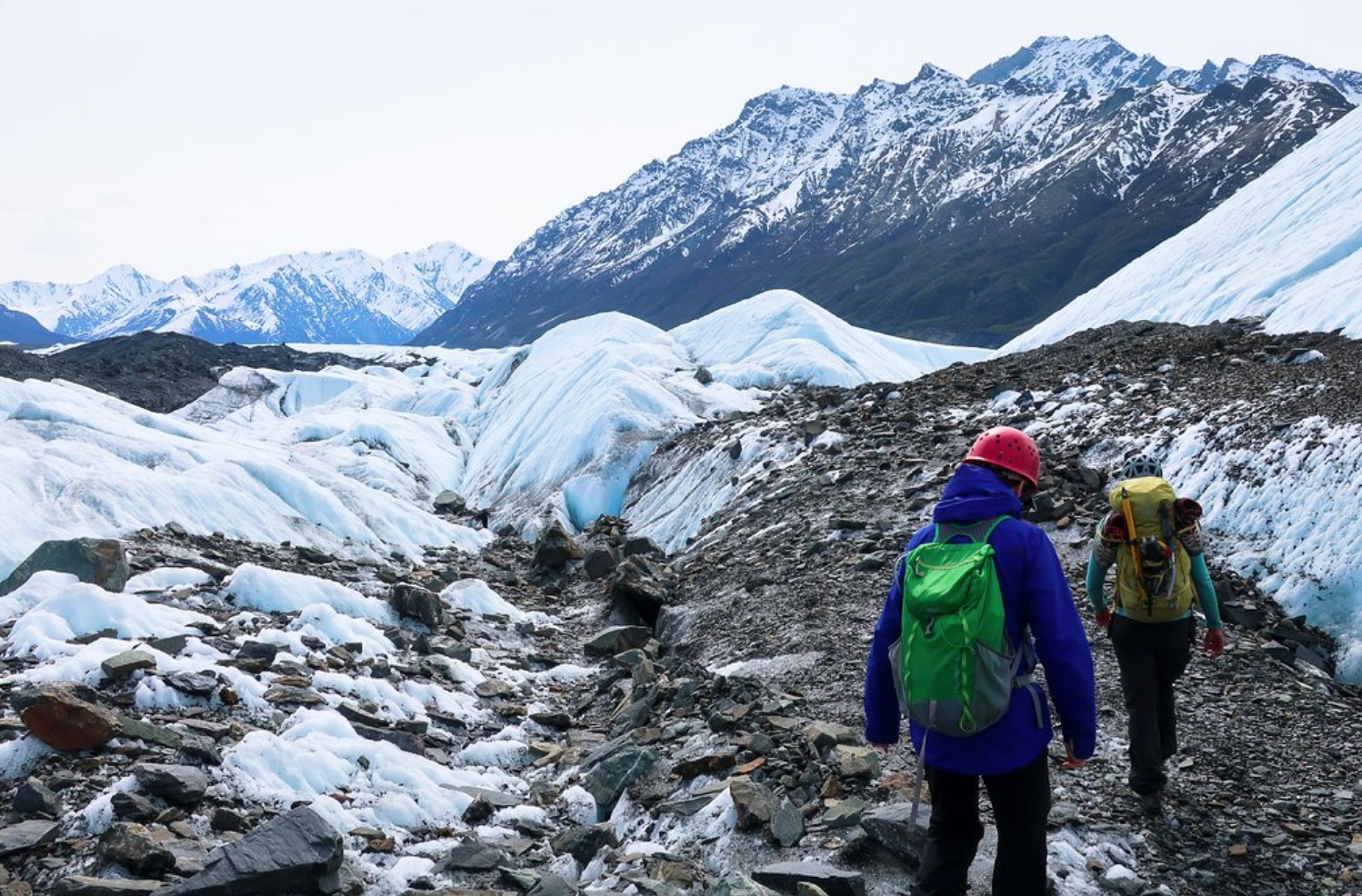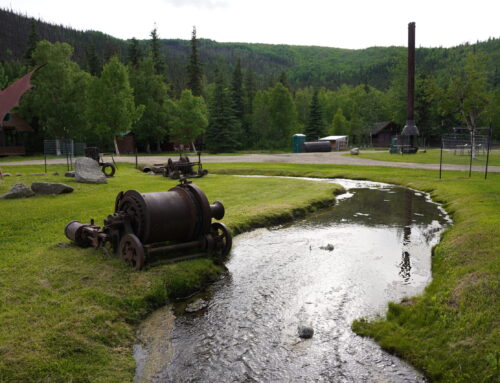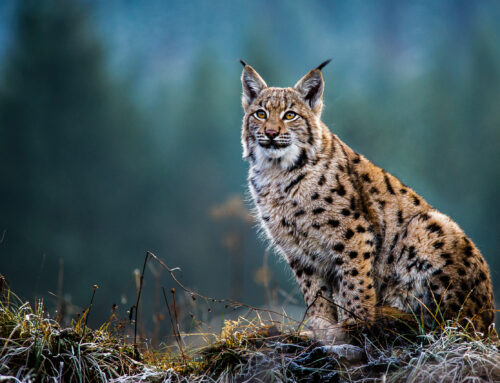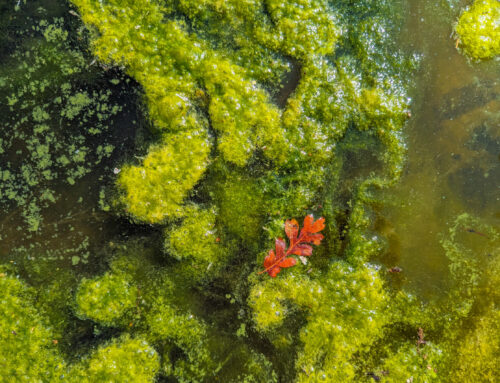What to Pack for Alaska
While it is likely one of the most beautiful places on earth, Alaska is also one of the wildest. You need to be able to plan for the unpredictable. This may make packing a little more complicated than you’re used to. This guide will help you figure out just what you need to pack for your trip to Alaska.
Clothing

Sunglasses and rain resistant gear are important for safety, especially when you are ice climbing!
The weather in Alaska is constantly changing. It can be sunny in the morning, raining in the afternoon, and overcast in the evening. This means that you should bring clothes that work in a variety of situations. The best way to do this is to dress in layers. Synthetic fabrics are best, and we recommend avoiding cotton clothing whenever possible. Here are some clothing items we suggest:
- A rain jacket and rain pants
A good rain jacket makes a huge difference in your ability to enjoy yourself while in Alaska. It keeps your warm clothes dry and protects you in a downpour. Rain pants aren’t necessary but can give you a little bit of added rain protection.
- An insulated jacket
This could be a fleece or a synthetic insulated puffy. Down is great in dry weather, but won’t keep you warm if it gets wet.
- Long sleeve shirt for sun protection
A synthetic, tightly woven, light-colored shirt will provide the most protection when it comes to sun and bugs. Some even come with sun protection and bug protection technology built into the fabric.
- Hiking pants
These should be quick drying, easy to move in, and made from a synthetic fabric. Extra pockets are a plus.
- A warm base layer
You should have one for both your top and bottom. These could be made from a synthetic material. However, wool is best because it is not only warmer, but also has antimicrobial properties so you won’t have to do as much laundry. Additionally wool is lightweight and dries quickly.
- Wool socks
Wool socks are essential in keeping your feet warm and happy. First off, they keep your feet warm even when wet. This makes a huge difference when trekking on a glacier or crossing a river. They will also lower your chances of getting blisters.
- Warm hat and gloves
Nights can get chilly, as can days out on snow or ice, so it is important to have something to keep your head and hands warm.

This group takes a break mid-day to reapply sunscreen and bug spray on their multi-day backpack through the Alaskan wilderness.
Sun + Bug Protection
While it rains a lot in Alaska, there are also days where the sun is out all day. So, considering sun protection is particularly important. Bugs are often present in all weather, and it can improve overall happiness if you have a plan to deter them. Long sleeves and pants are ideal for most situations. Here are a few items that can help protect you from both sun and bugs:
- Sunscreen
We suggest one that is mainly zinc. Zinc is often called a physical sunscreen, because instead of soaking in like most chemical sunscreens, it sits on top of your skin. This blocks the sun’s rays by scattering them in different directions.
- Bug repellent
There are a few different types of bug repellent to consider. The first is a spray that goes directly onto the skin. This could be chemical based repellent like Picaridin or Deet, or you could go the more natural route with a plant oil-based repellent. The other option is to wear treated clothing. Some clothing will come with a treatment, or you can do it yourself by buying spray-on Permethrin.
- Sunglasses
Alaska is known for its glaciers and it is more than likely that you will have the chance to see one on your trip. The ice on a glacier or the surface of water can bounce a glare back at you, this is called double exposure. This can potentially cause damage to your eyes. Sunglasses help protect you and make it easier to see while out on a glacier, or on any sunny day. Sunglasses with UV protection is recommended.
- A Sunhat
A little extra sun protection never hurt anybody. A good sun hat with a large brim will provide that extra bit of shade to help protect you on those sunny days.
Shoes
One of the best parts of coming to Alaska is the easy access to amazing hikes and adventure. Having good footwear will make all the difference in enjoying those activities.
- Hiking Boots
A sturdy pair of hiking boots or trail shoes will be essential for most of your adventures. You will want something that is comfortable and has good traction. Take the time to get your boots fitted and break them in before your trip to avoid blisters and hot spots.
- Sandals
Having a pair of sandals that you can change into at the end of the night gives your feet a much-needed break from your hiking boots. Giving your feet time to dry out for at least a couple hours a day is essential to your foot health.
Extras
- An eye mask or buff
Alaska is called the land of the midnight sun for a reason. Throughout most of the summer it never really gets dark. If you are light sensitive at night you may want to consider something to cover your eyes. This is particularly handy when spending the night in a tent which blocks very little light. Bird’s tend to sing through the midnight sun as well so bringing along some ear plugs for certain areas may be in your best interest.
- Day pack
If you’re getting out and really exploring Alaska you are going to want somewhere to store your stuff. For just about anything you will be doing you will likely be happy with a small lightweight day-pack between 18-30 liters.
- Bear Spray
If planning on spending time in the Alaskan wilderness, bear spray is an essential in case of close encounters with bears. Plan on getting this when you arrive in Alaska as it is not allowed on planes. In addition, be loud and talkative out in the woods to make sure any wildlife knows you’re coming. Click here to find out how to be more bear aware.
- Binoculars
These are not necessary but can be fun to have if you are interested at getting a closer view of wildlife or far off scenery.
- Camera/phone
Alaska is beautiful and pictures are a great way to remember your experiences here. Nowadays, most phone cameras are just as functional as a standard camera. So, keep your packing light and make sure your phone is charged. Phones can double as GPS for the trails too. You can often benefit from traveling with a backup battery bank. This helps to ensure that you have a charge, no matter where you are.
Packed and Ready for Adventure
Knowing what to pack for your trip to Alaska can make all the difference in your experience. And, taking on logistics early can help you feel ready to dive fully into Alaska. So get packed and get out there, Alaska is ready to be explore, responsibly.






